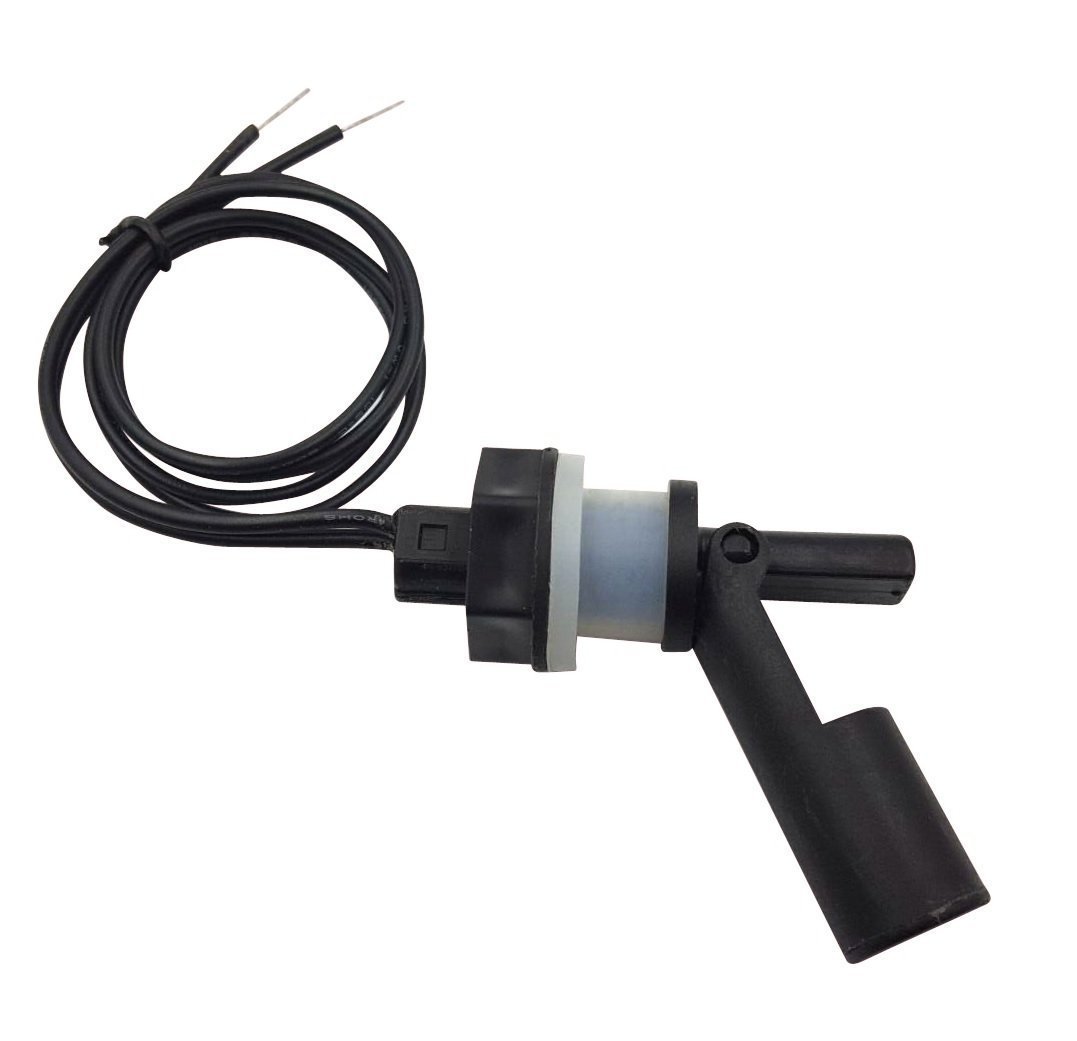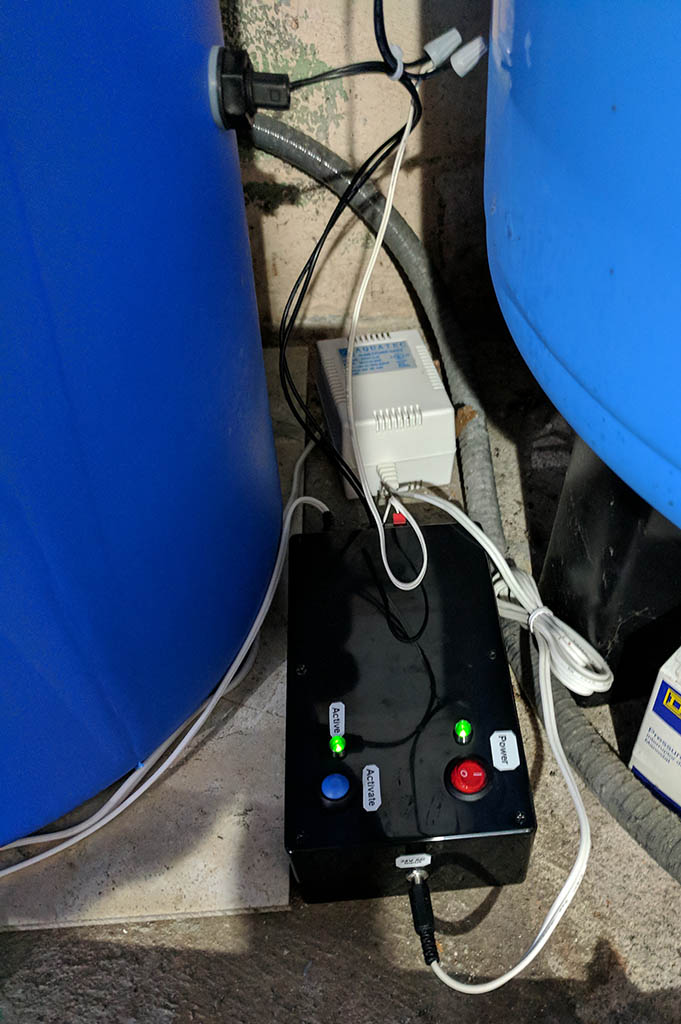The_Bishop
Well-Known Member
- Joined
- Dec 8, 2013
- Messages
- 2,100
- Reaction score
- 676
I'm in the process of setting up my RO system to use a non-pressurized storage tank. I've come up with a high and low float switch setup using a relay and a latching circuit; it looks good to me but I'd like a second opinion and a sanity check.
My half-assed schematic is below. The idea is when the water level drops, the high switch enters the 'closed' position. This completes the 'ground' for the relay coil. When the water drops low enough, the low switch engages. This energizes the DPST relay coil, which switches the relay 'on'. Power is sent to the pump, and from the second relay terminal power is sent to the coil circuit, effectively 'latching' the relay closed so when the water level rises, the lower switch position doesn't matter any longer. When the water in the storage tank engages the top switch, it breaks the circuit for the relay coil which causes it to disengage and opens the relay.
Am I getting this right?
My apologies for the crappy diagram. Used tinycad to put it together.

My half-assed schematic is below. The idea is when the water level drops, the high switch enters the 'closed' position. This completes the 'ground' for the relay coil. When the water drops low enough, the low switch engages. This energizes the DPST relay coil, which switches the relay 'on'. Power is sent to the pump, and from the second relay terminal power is sent to the coil circuit, effectively 'latching' the relay closed so when the water level rises, the lower switch position doesn't matter any longer. When the water in the storage tank engages the top switch, it breaks the circuit for the relay coil which causes it to disengage and opens the relay.
Am I getting this right?
My apologies for the crappy diagram. Used tinycad to put it together.







